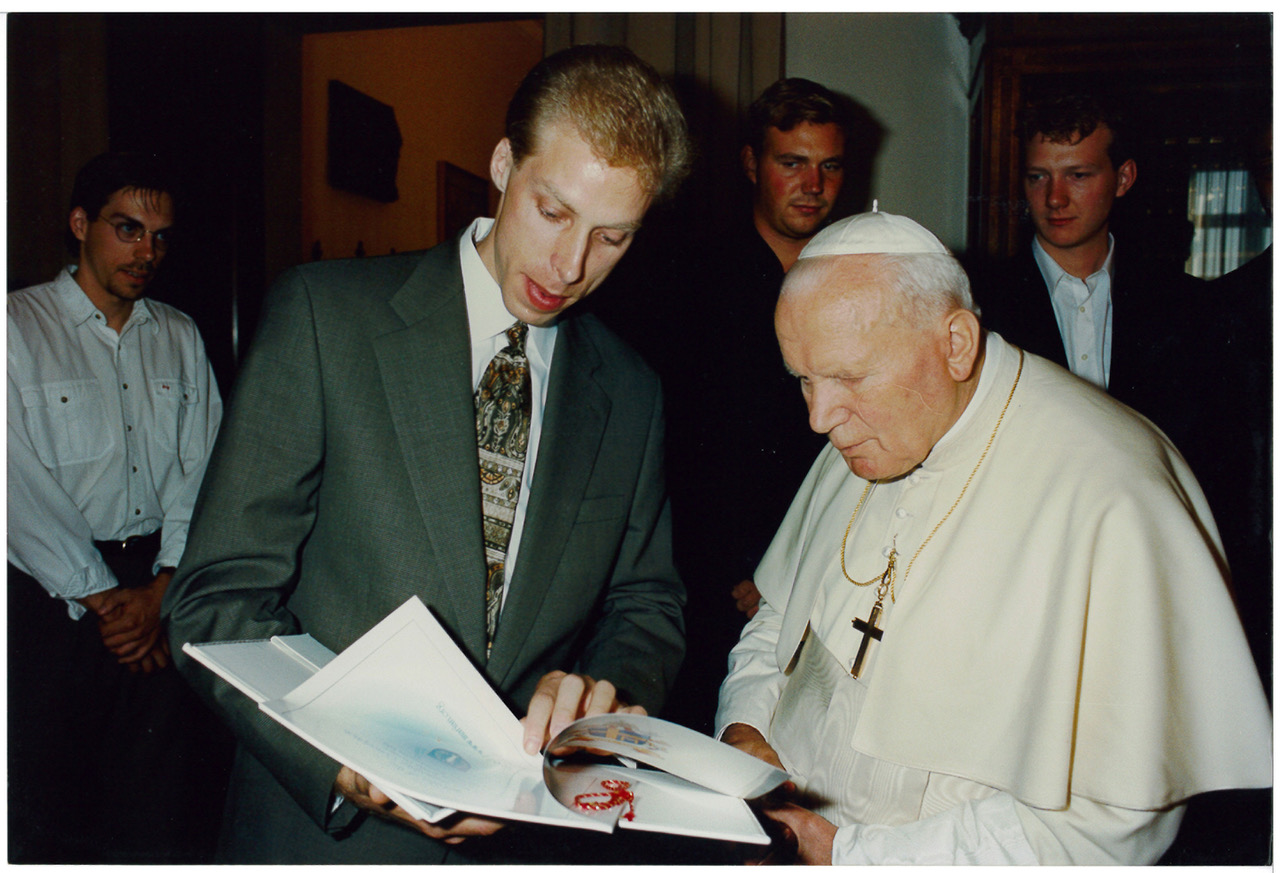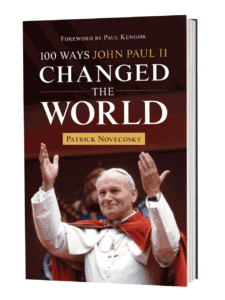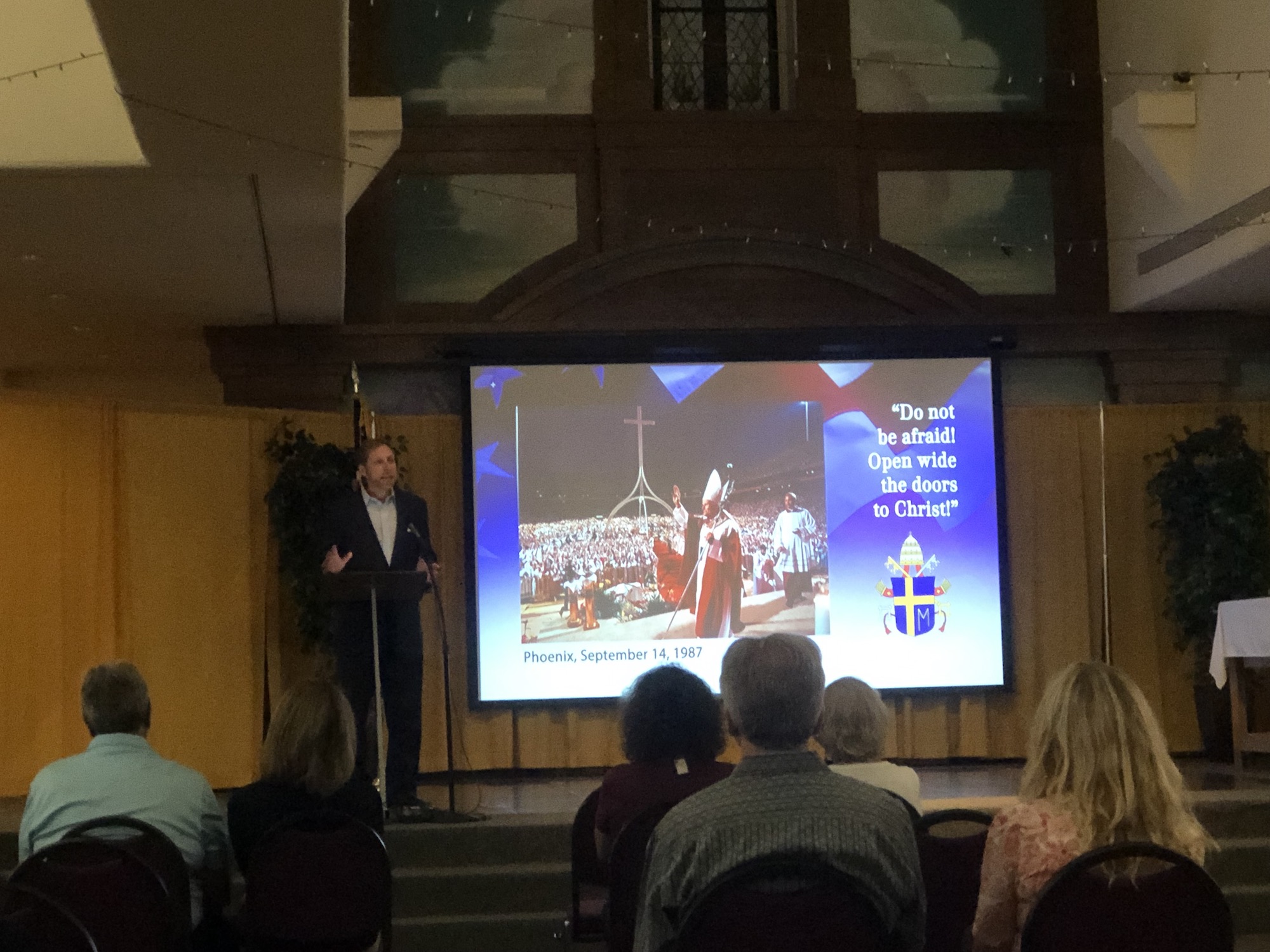

By Tony Gutiérrez, The Catholic Sun
CHANDLER — Ahead of St. John Paul II’s Oct. 22 feast day, journalist and author Patrick Novecosky reflected on the late pontiff’s impact on the United States during a presentation Oct. 19 at St. Andrew the Apostle Parish.
“In his addresses, John Paul II extolled the founders’ vision of freedom and self-rule and reminded Americans there’s responsibility that comes with liberty,” said Novecosky, the former editor of Marian Helper magazine and author of “100 Ways John Paul II Changed the World.”
“We’re called to empty ourselves, and John Paul II showed us how to do that: it’s humility, a passionate love for the Eucharist and for the poor and allowing the Holy Spirit to move us,” said Novecosky, recalling his own audience with the pope Oct. 1, 1997. “That’s what people experienced in his presence, myself included, that here was a man that showed us how to be a saint.”
St. John Paul II visited the United States nine times, including twice as Cardinal Karol Wojtyła of Kraków. He took Apostolic Journeys to the U.S. in 1979, 1987, 1993, 1995 and 1999, while he stopped in Alaska twice — in 1981 and 1984 — during Apostolic Journey’s to other nations.
For his first words on U.S. soil as pontiff as he disembarked from Shepherd One at Logan Airport in Boston, he declared: “America has opened her heart to me. … I come as one who already knows you and loves you, as one who wishes you to fulfill completely your noble destiny of service to the world.”
“That is a powerful line. The pope understands our history, and he wants us to fulfill our destiny of service to the world,” said Novecosky, who is based out of Northern Virginia. “What other country did he say, ‘You need to give service to the world’?”
During his presentation, Novecosky interacted with attendees who were present at John Paul’s historic Sept. 14, 1987 visit to Phoenix. Patricia McGilvray, who attended Holy Spirit Parish in Tempe at the time, mentioned that she had won the tickets to the Mass at Arizona State University’s Sun Devil Stadium in a parish lottery and sent her husband and two sons to go to in her stead.
“Both of them had been altar boys growing up and enjoyed Mass and their faith,” she told the Sun later. “They’re still both good Catholics today.”
Vicki Buckman, who attended St. Timothy Parish in Mesa at the time, recalled seeing the Holy Father with her late husband, who wasn’t a Catholic.
“He wasn’t Catholic, but he went, anyway,” she recalled. “I still have all the newspaper articles from it. I kept everything that I could because it meant so much to me.”
Highlighting the late Holy Father’s friendship with former U.S. President Ronald Reagan, Novecosky noted that Reagan saw the pope as “the key” to ending Communism after the latter visited Poland. As president, he flew to Fairbanks, Alaska in 1984 just to meet with the pope for his brief stop in the country. The two also met when the pope landed in Miami for the first leg of his 1987 journey, and twice in the Vatican.
“After he left office, a delegation from the Polish government came to Reagan’s ranch in California to get his wisdom on how to build a democracy in Poland, and they noticed the picture of the two of them on Reagan’s mantle,” Novecosky said. “Reagan said, ‘He’s my best friend. I know, I know. I’m Protestant, he’s Catholic, but he’s still my best friend.’”

The speaker also recalled the media buzz saying John Paul’s 1993 World Youth Day being held in Denver would be a failure, because many didn’t believe young people would want to see an old pope.
“He got a rock star welcome. They seem to have forgotten 1979 and 1987 when he toured the country,” he said. “The reason he was a magnet for youth was because he was honest with them,” Novecosky said later during a question-and-answer session. “He was real with the youth, he was genuine. They fed off him, and he fed off them, and it was beautiful.”
Mark Messer, a St. Andrew parishioner, told the Sun that he was inspired by St. John Paul II’s impact on not just average Catholics but on world leaders, as well.
“It gives you hope,” Messer said. “The way things are nowadays, you need that hope.”





